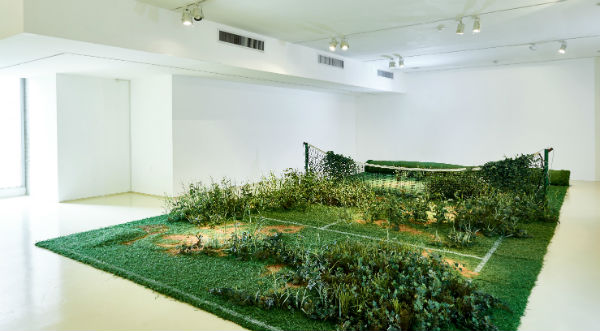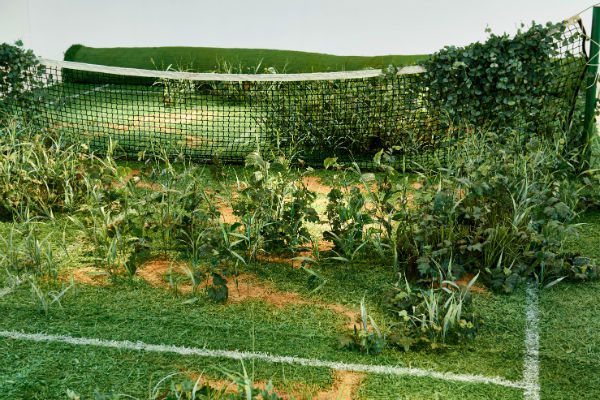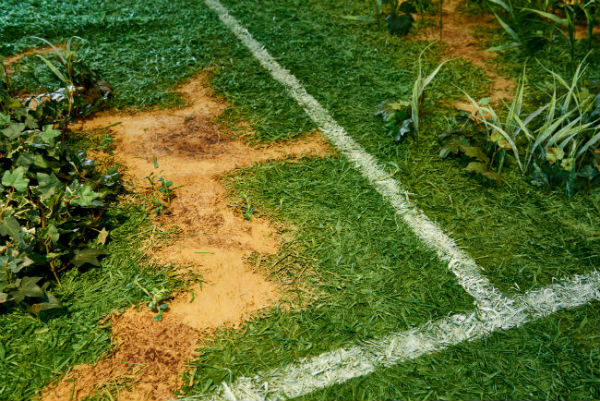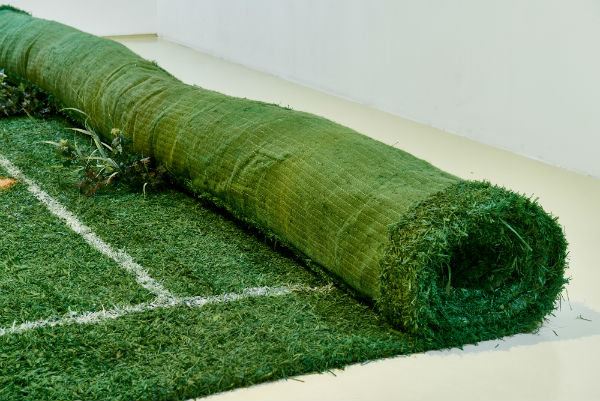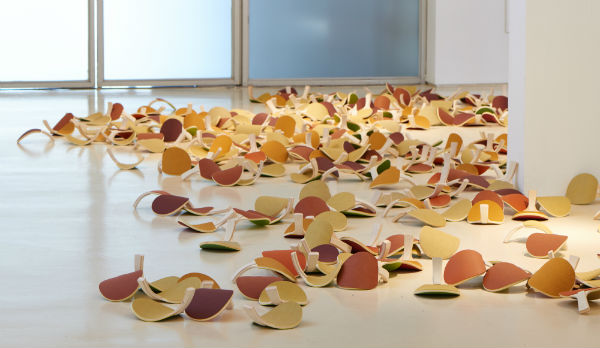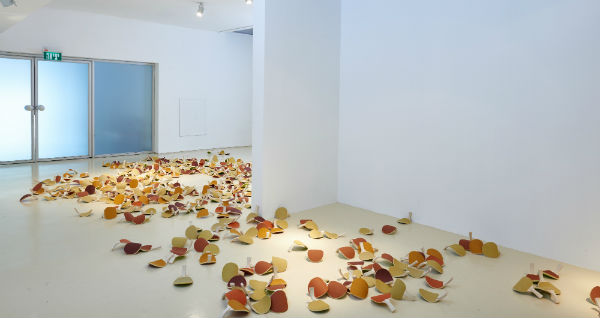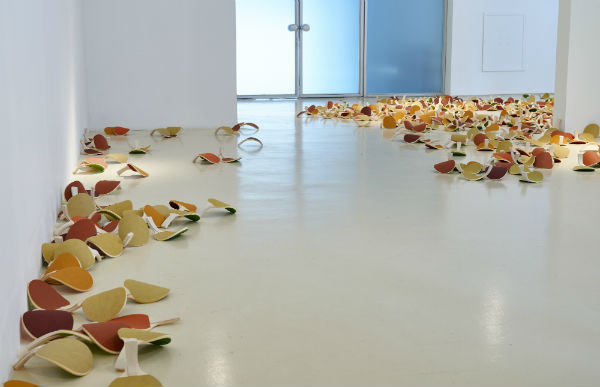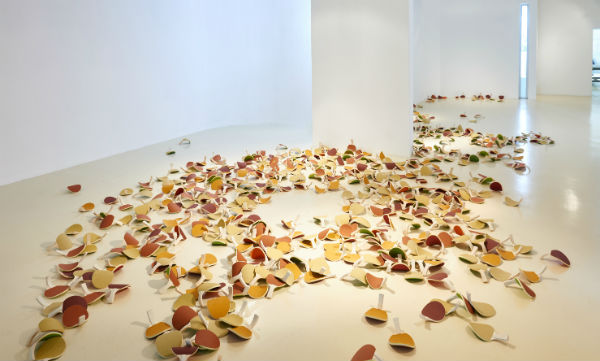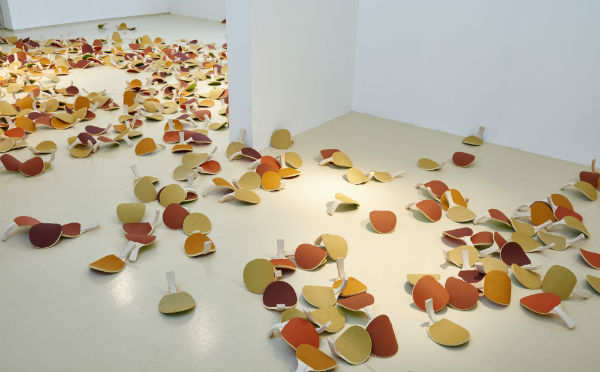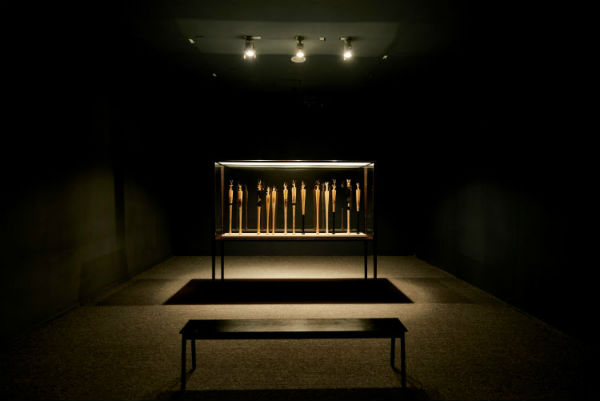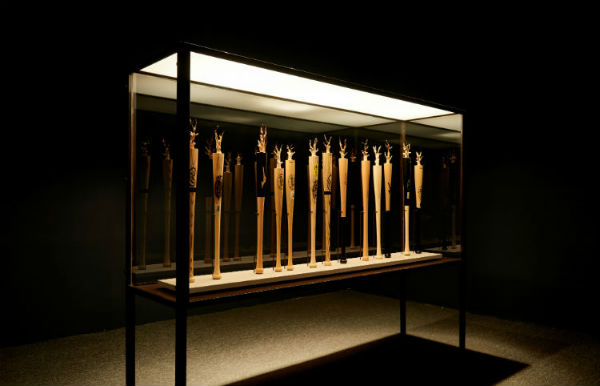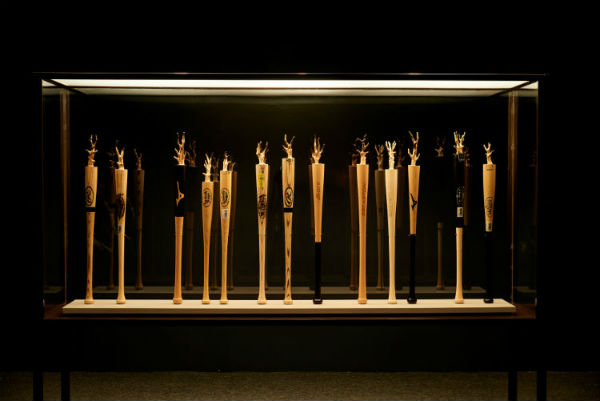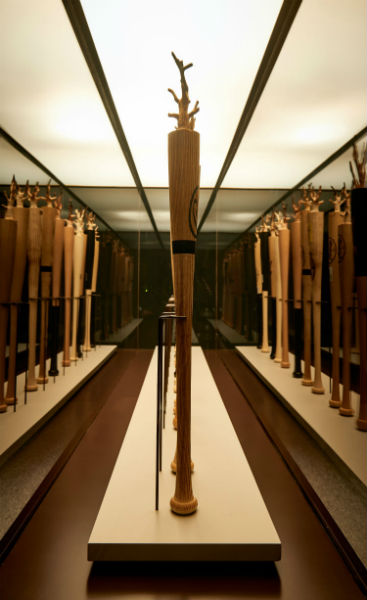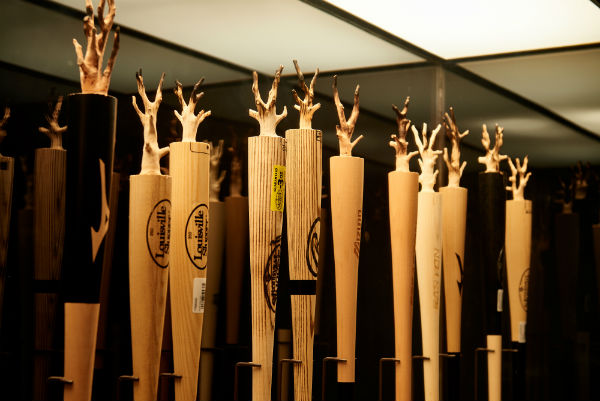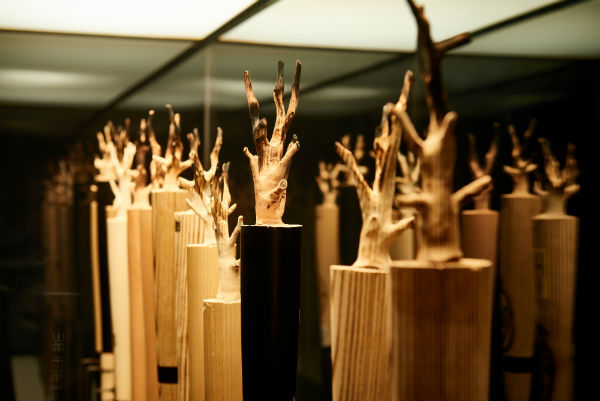Tal Frank
Tie Break
Herzeliya Museum of Contemporary Art, Herzeliya
Feb - April 2015
Tiebreak, a solo exhibition by Tal Frank, draws its inspiration from the paraphernalia of competitive sports while offering an image of an elusive, parallel world. Consisting of three autonomous installations, Tiebreak encompasses a shared iconography that forms a sequence of narrative episodes in between the mundane and the fantastical. A fictive reality, it draws on the realm of sports as a signifier of a contemporary culture of leisure – a repertoire of imagery that includes ping-pong rackets, baseball bats, a tennis court and more. These objects are introduced into staged, sculptural mise-en-scènes evocative of natural landscapes. Yet once integrated into these new environments, the items are denied their primary functionality as sports gear; in their new narrative and formal context, there is no room for the competitiveness and rivalry of the sports from which they were culled. The trace of their former physical impact is re-inscribed as part of a new sculptural process, in which it is for the artist to set the rules and exert power.
The act of re-appropriating found objects is at the center of the ambiguous world of Tiebreak, whether through their integration as actual readymades or as subjects of formal representation. Either way, once recontextualized, Frank pushes the material, formal and thematic limits of the object by way of the subtle sculptural shifts she applies. These transformations, which alter the object’s customary visual configuration, result in new images: a horizontal alignment of baseball bats becomes evocative of an Israeli forest consumed by fire; clusters of ping-pong rackets emulate the fallen leaves of autumn; and a tennis court is turned into a decorative carpet overgrown with wild vegetation.
Both alluring and disturbing, the parallel world that Frank creates invites the viewer to dive in and succumb to its compelling beauty. Yet under the surface, behind the lure of beauty, lies a muted violence evocative of solitude and alienation. This universe, which seems governed by an unlikely logic, manifests itself in a number of isolated episodes, like distinct instances frozen in time. Each of these sculptural constructs unveils the three-dimensional frame of an engineered nature, where the strange and familiar coexist. They are informed by the awe and disorientation typical of the fictive world of animated films – with good reason, as Frank’s work process often conflates the real and the virtual. Each of these sculptural mise-en-scènes began as a digital simulation of the object using 3-D imaging. This digital rendering unleashes the familiar object from realistic constraints, allowing for unlimited freedom toward the construction of a new reality. Breaking away from the constraints of physicality, reality and functional value, the virtual images are re-translated into art objects, this time through actual manipulation of matter.
Frank’s sculptural environments are platforms for simulation and imitation, scenes that trace a supposedly concrete reality. Yet in every such creative process, the artist leaves a conspicuous flaw in the work itself, a mark that exposes the medium’s failure inherent in realizing the mimetic project. It is a crucial moment in the work, since the traces of failure equally constitute, paradoxically, the mark of success. It is a moment in which the viewers realize that the sculptural environment they behold is, in fact, an assortment of objects, a visual construct through which the artist formulates questions that go beyond the object and pertain to concepts of beauty and aesthetics, domination and force, life and death.
First Set features a large bed of synthetic grass simulating a tennis court in a scale of 1:2. Somewhat like a carpet, the grass surface is slightly rolled at one end, making the tennis court a portable item that can be easily rolled up and transported. However, the surface of the ground is overgrown with vegetation – myriad offshoots that would render any attempt at conducting a match impossible. These offshoots, as synthetic as the field itself, lend it the equivocal look of a peaceful, well-regulated ecological garden on the one hand, and that of a deserted no-man’s land, where unruly weeds and wild vegetation have taken over, on the other.
The double meaning of the installation encompasses the contradictory implications of life and death. The wild vegetation points to a process of regeneration, growth and vitality, yet the unregulated pattern of the growth suggests downfall, ruin, and dereliction – whether at some point in the past or as an imminent eventuality. In this sense, First Set presents a metaphoric vision of our present times, a world of immediate supply and availability, fluid geographical borders, and a semblance of excess and abundance meant to encourage compulsive consumption without end. Frank’s tennis field operates as a monument both to an obscure past and a futuristic, post-apocalyptic reality where the synthesized beauty of fake vegetation supplants organic growth. It is a place where the ephemeral and timeless reside side by side.
Second Set consists of a multitude of ping-pong rackets scattered across the exhibition space, their formation emulating clusters of fallen leaves in autumn. There are hundreds of them, all hand-made by the artist, and they are lying around motionless and passive, recalling an image of an ephemeral nature, a stop in the passage of time. This autumnal tableau occupies a state of in-between, a transitory stage locked between the memory of a thing past and a future about to unfold. Like the two-sided rivalry of tennis, the game of professional ping pong harbors a struggle for domination, which here too is converted into a material manipulation exerted upon the object. Each of the many rackets scattered on the floor underwent slight bending, which turned them from sports gear into fallen leaves – brittle organisms that have succumbed to the cyclical laws of nature, withered and fell.
However, the sheer multitude of the rackets lends these objects a force of a different kind, such that accumulates into a presence in space that defines a time and a place. This multitude is itself dual, highlighting both the individual handiwork put into each racket as a pièce unique while bringing to mind the endless repetition of a mass-produced object. The crisp aesthetics of computer animation, of a 3-D rendering where everything is possible – including a ping-pong racket turned into an autumn leave – produces an elusive image that blends the real and the imaginary, the spiritual and the earthly. Wandering in this autumnal, supposedly pastoral scene of autumn leaves conveys a charged and melancholy emotional experience not without overtones of critique and irony.
Third Set presents a collection of baseball bats that seem to be floating in a row, one by one, in a large glass display. At the top end of each bat we perceive a blackened offshoot, a blossoming that resembles branches or roots that spring from the bat’s head but is in fact carved in its wood. The glass case that contain them recalls a museum display of rare exemplars salvaged from a disaster-ravaged zone; scientific in character, it references the display mode of science and ethnography museums. The unique carving at each head preserves the trace of a thicket consumed by fire. Now, at its post-traumatic stage, it commemorates the indomitable balance of power in nature.
The wood carving undertaken by the artist is applied to an existing, readymade object, resulting in a hybrid object that harbors an array of conflicts and inner contradictions. The baseball bat, originally the product of mass production, seeks to reclaim its primary, organic properties, to grow branches once more and return to the raw materiality of the wood. At the same time, as the familiar shape of the baseball bat remains largely intact, it maintains the various cultural connotations to a field sport so quintessentially American. Third Set operates the appropriation of a an emblematic item from popular American culture, an object which contains the powerful impact of the stroke for which it was made but, nonetheless, produces traces of a post-apocalyptic landscape. The resulting image assumes the poetic dimension of a lamentation over nature’s devastating power.
Sally Haftel Naveh

